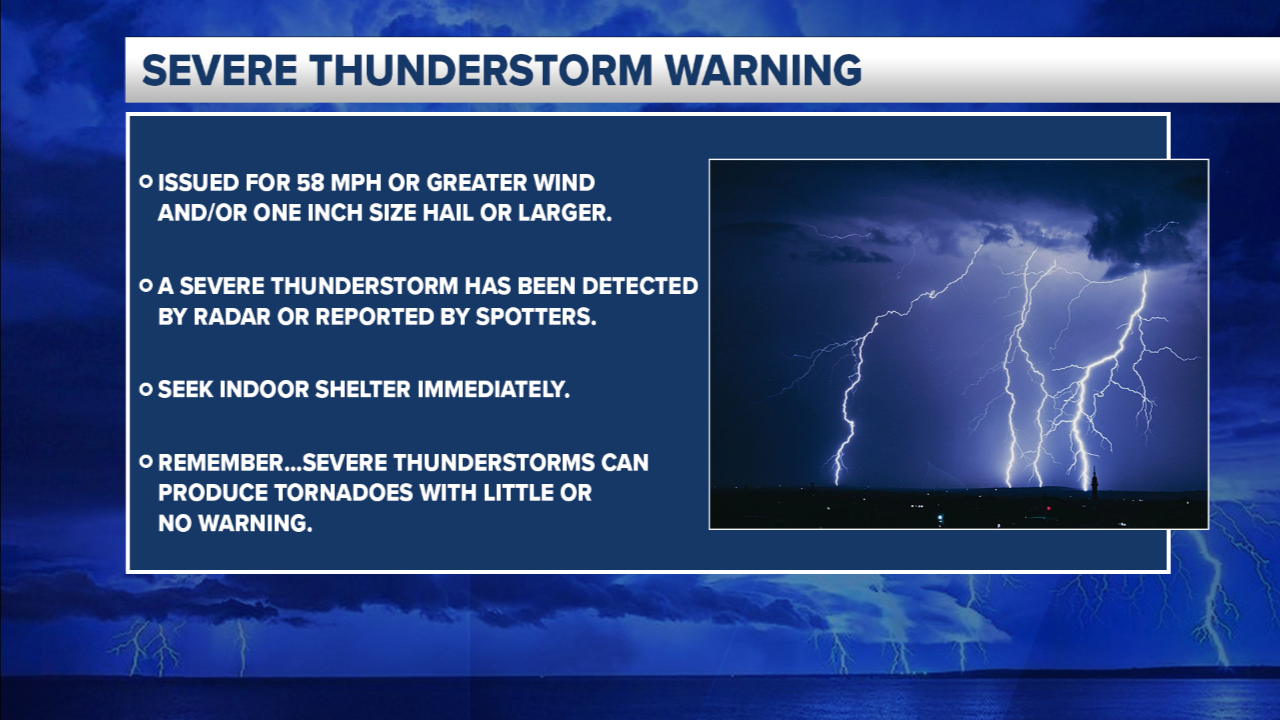WEST MICHIGAN — Severe Weather Awareness Weeks are scheduled across the county as an opportunity to raise awareness of severe weather hazards. It's a time to prepare and learn how to stay safe in severe storms. They are often scheduled ahead of the typical severe weather season for each state. In Michigan, Severe Weather Awareness Week is March 17 through March 23.
The best way to stay safe during severe weather in West Michigan is to be both prepared and informed. The FOX 17 Weather Team will be explaining severe weather conditions and severe weather safety tips all week long. Click here for our daily coverage on Severe Weather Awareness Week.
Today's Question: What makes a thunderstorm severe?
In order for a thunderstorm to be considered severe, it needs to meet a certain criteria. A severe thunderstorm must have wind speeds at least 58 mph and/or hail at least one inch in diameter. If we don't have either of those two things, it is simply a non-severe thunderstorm.

Severe thunderstorms are detected by meteorologists via Doppler radar or by trained weather spotters. As a reminder, severe thunderstorms can produce tornadoes with little or no warning. It's important to use caution and take action when a Severe Thunderstorm Warning is issued. You should move to a sturdy shelter immediately and find a room away from the windows.
Severe Thunderstorm Warnings are also issued by the local National Weather Service office. In West Michigan's case, that is the National Weather Service office in Grand Rapids.
Severe thunderstorms are formed by specific ingredients, including moisture, instability, wind sheer, and a lifting mechanism. Depending on the amount of each ingredient, that can determine how strong the severe thunderstorm is.

If West Michigan has the atmospheric ingredients of ample moisture, high instability, strong wind sheer, and a sufficient lifting mechanism, that can produce wind gusts and hail well-over the required severe threshold. It is common for West Michigan to experience greater hail sizes and stronger wind speeds than the severe threshold during the severe weather season. At FOX 17, our team of Meteorologists tries to "quantify" hail size, wind speed, and the tornado threat along with the severity of the tornadic environment. See image above.
Are you curious about the difference between a watch and a warning? Click here for our previous Severe Weather Awareness Week coverage.
For the latest details on the weather in West Michigan, head to the FOX 17 Weather page.
Follow FOX 17: Facebook - X (formerly Twitter) - Instagram - YouTube



